Ugan concept "Chinese Character Structure" furniture series
家具的发展历史源远流长,传统的中国家具以木为主要材料,蕴含着独特的营造技艺与审美。感物作为木地板品牌,一直以来便对中国传统制木工艺及其设计转化十分关注,而家具是其中一个重要的部分。继用42块自然染色木地板拼合而成的“鞍-椅”后,感物邀请将究建筑设计事务所设计了“汉字结构”系列家具产品,从当代设计角度与中国传统木制家具发生连接和对话。
The history of furniture development is long and rich. Traditional Chinese furniture, primarily made of wood, embodies unique craftsmanship and aesthetics. As a wood flooring brand, Ugan concept has always paid close attention to traditional Chinese woodworking techniques and their design transformation, with furniture being a key focus. Following the "An-chair" made from 42 naturally dyed wood floorboards, Ugan invited DRA architect to design the "Chinese Character Structure" furniture series, creating a contemporary dialogue with traditional Chinese wooden furniture.

From Floor to Furniture
中国传统家具的演化始于“席地而坐”,人们直接坐卧于地面,此时的地板是一个综合起居平台,各类家具都依附地板使用。之后经历了一个漫长的过渡期,从坐在筵席上抬高到坐在床榻上,期间床榻系统也与西域传入的禅床、胡床等等高足家具共处。直到宋代之后席地而坐的家具系统才被椅子、桌子、柜子等高型家具的系统完全取代。后来的中国传统家具正是因为有了这两三千年逐渐抬高的漫长演化过程,所以在形式上可以发现对席地系统和床榻系统的沿袭和继承,而很少像西方的家具形式那样是从“发明”而来。
The evolution of Chinese furniture began with "sitting directly on the floor" . People sat and slept directly on the ground, making the floor itself a versatile living platform where all furniture depended on it. After a long transition period—moving from sitting on mats (yan xi) to sitting on low platforms (ta)—this low-level system coexisted with taller furniture like the Zen bed (chan chuang) and foreign-style beds (hu chuang) introduced from the Western Regions. It wasn't until after the Song Dynasty that the floor-sitting system was fully replaced by the system of taller furniture like chairs, tables, and cabinets. Because of this millennia-long evolution of gradually rising heights, later traditional Chinese furniture shows clear inheritance from the floor-sitting and platform systems, rather than appearing as sudden "inventions" like some Western furniture forms.


以椅子为例,椅子的座面和靠背部分形似席地而坐的家具“养和”,据此我们可以将一件高型的传统家具看作是一个席地家具(模件一)和用来抬高和支撑的木框架(模件二)的结合,也可以看作是身体接触面和支撑结构的结合。根据人体不同的坐姿需求,与身体接触的座面会根据身体贴合度而做改变;椅脚则从地面抬升至不同高度,从而得到适用于不同场景、不同功能需求的坐具。
Take the chair, for example. Its seat and back resemble the floor-sitting furniture piece "Yang he". Thus, a tall traditional piece can be seen as a combination of a floor-level furniture element (Module 1) and a wooden frame for elevation and support (Module 2), or as the combination of a body-contact surface and a supporting structure. Depending on different sitting postures, the contact surface adapts for comfort, while the legs elevate to different heights, creating seats suitable for various scenarios and functions.

所以我们想,家具是否可以在这样的拆分中,在高低变化间,包含传统家具发展历程中“人”与“地”的各种关系,高型家具也能包含重新亲近地板的可能性。
Therefore, we wondered: could furniture, through such disassembly and height variation, encompass the various relationships between "people" and "ground" seen in traditional furniture development? Could taller furniture also incorporate the possibility of reconnecting with the floor?

Designing Furniture Using Chinese Character Construction Methods
这种对椅子的拆解方式也让我们联想到汉字的构成。汉字本身就是一个完美的模件体系,每一个汉字都由可以分拆的模件(偏旁部首)构成,有的表意,有的表音。靠着这套更复杂的模件体系,汉字相比字母拼写的文字,在构字、丰富性、复杂性、美感、传达、文化连续性等各方面都更有优势。而依据家具演化过程对传统家具进行的理解和拆分,和汉字“模件化”的构造方式有着相似之处。 我们用汉字结构的“模件化”方式,将家具设计出两类基本单元模件:一类是作为“面”的坐面、置物面板、托盘、箱等,另一类是大小和高低不同的多种木构框架。
This way of deconstructing chairs also reminded us of the composition of Chinese characters. Chinese characters themselves form a perfect module system. Each character is composed of separable modules (radicals and components), some indicating meaning, others sound. This more complex module system gives Chinese characters advantages over alphabetic writing in construction, richness, complexity, aesthetics, communication, and cultural continuity. Understanding and disassembling traditional furniture based on its evolution shares similarities with the "modular" construction of Chinese characters. Using this "modular" approach of character structure, we designed two basic unit modules for furniture: one is the "surface" module (seat surfaces, tabletops, trays, boxes), the other is various wooden frames of different sizes and heights.

模件一

模件二
以此为基础,将模件一、二进行不同方式的组合,主要包括:
汉字的“嵌套”——将两个模件一组合成的新模件与一个模件二组合;
立+日-音
音+心-意
汉字的“拆合变形”——将一个模件一通过一定的变形再与不同的模件二重新组合;
心-感-悟
汉字的“并置叠加”——将单个模件的重复叠加组合。
木-林-森
Based on this, Modules 1 and 2 are combined in different ways, mainly including:
"Nesting": Combining a new module formed by two Module 1s with one Module 2.
立+日-音
音+心-意
"Disassembly/Deformation & Recombination : Deforming one Module 1 and recombining it with different Module 2s.
心-感-悟
"Juxtaposition/Stacking" : Repeatedly stacking and combining single modules.
木-林-森
椅
Chair
椅-壹:
是由一个带有简易靠背和扶手架的底座框架,一件带有靠背的坐具,以及一个面板组合变化而成。坐具尺度低矮,嵌入框架则合成一把高型组合椅;将坐具换成面板与框架组合,则构成一把禅椅。三种高低尺度对应了传统家具演化史中“席地”“盘足”“垂足”三种坐姿。
Chair-Ⅰ
A modular composition combining a base frame with minimalist backrest/armrest supports, a low-profile seat unit with backrest, and a panel system. The seat unit's compact height integrates with the frame to form an elevated chair, while substituting the seat with panels creates a meditation chair. Three height variations correspond to sitting postures in furniture evolution history: floor-sitting, cross-legged seating , and chair-sitting.


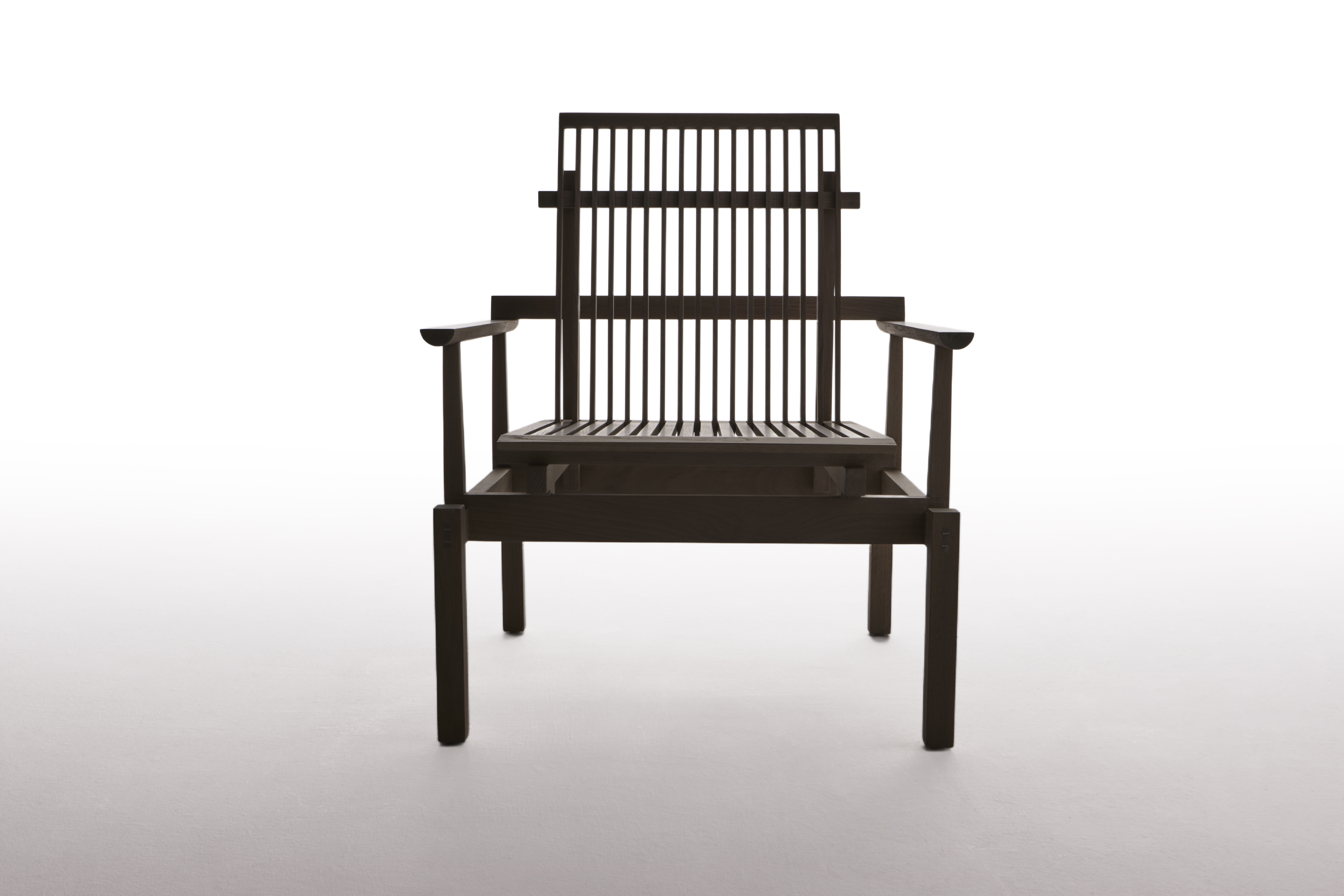
椅-壹 高型组合椅

椅-壹 禅椅
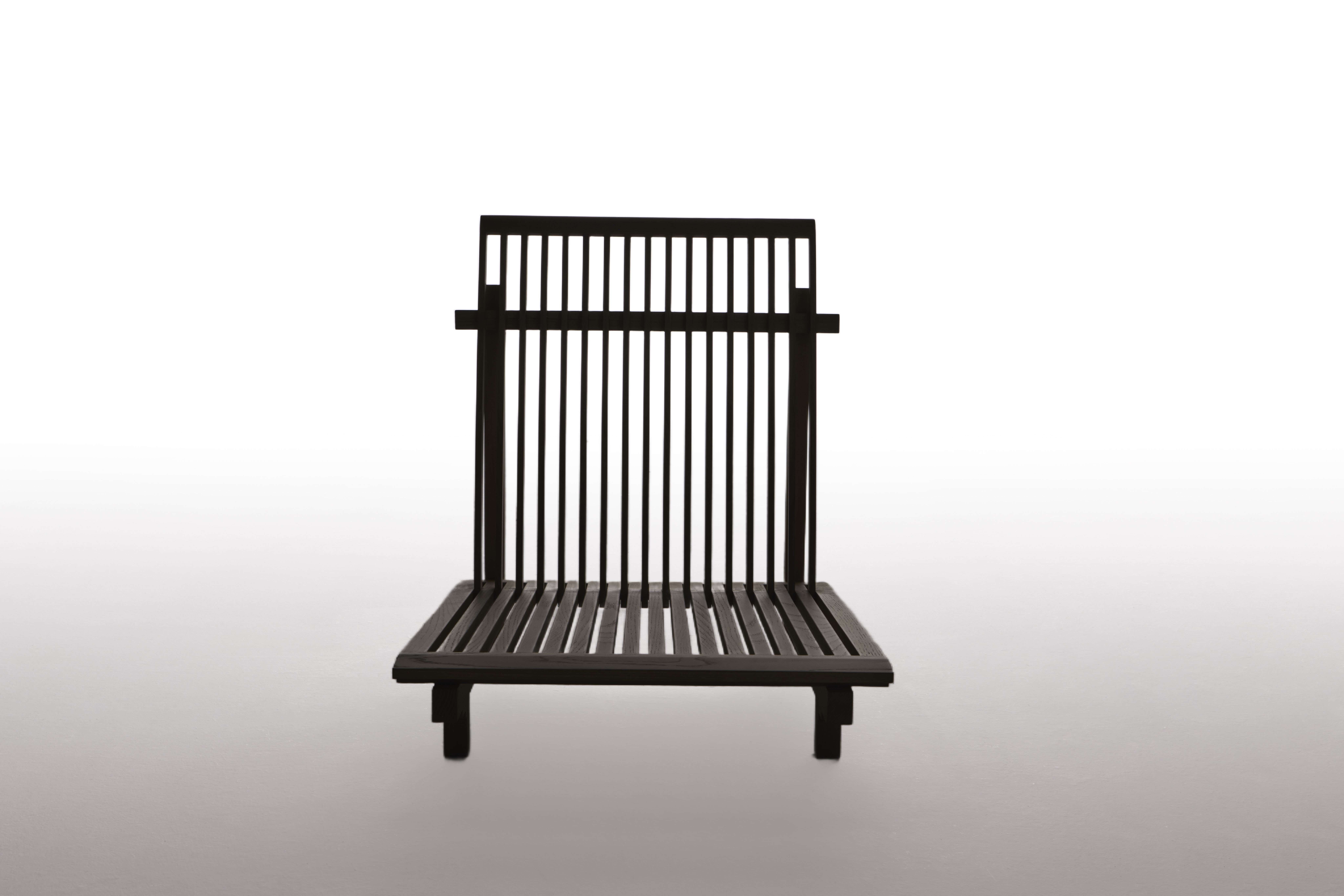
椅-壹 靠背坐具


椅-壹 组合和变化
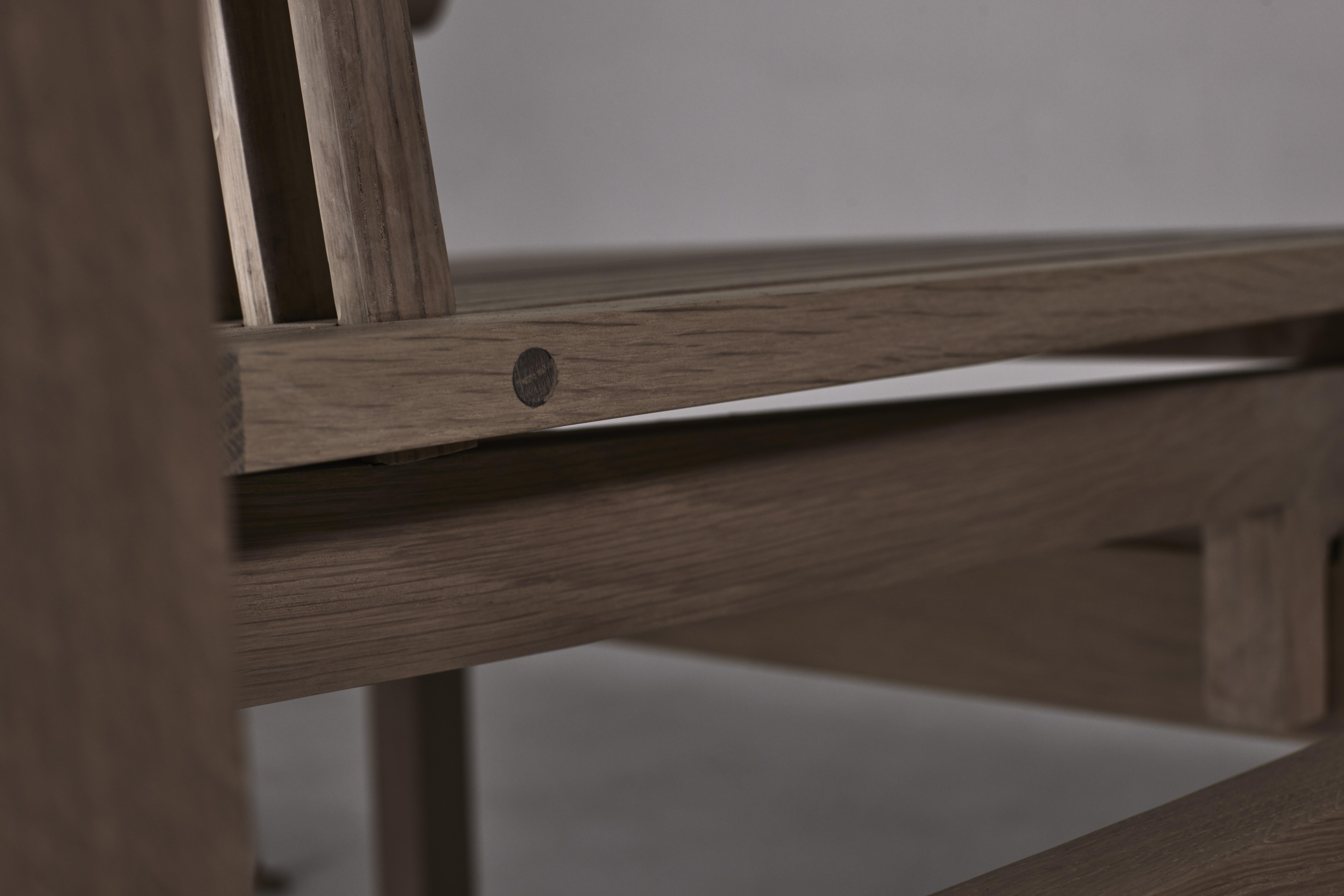

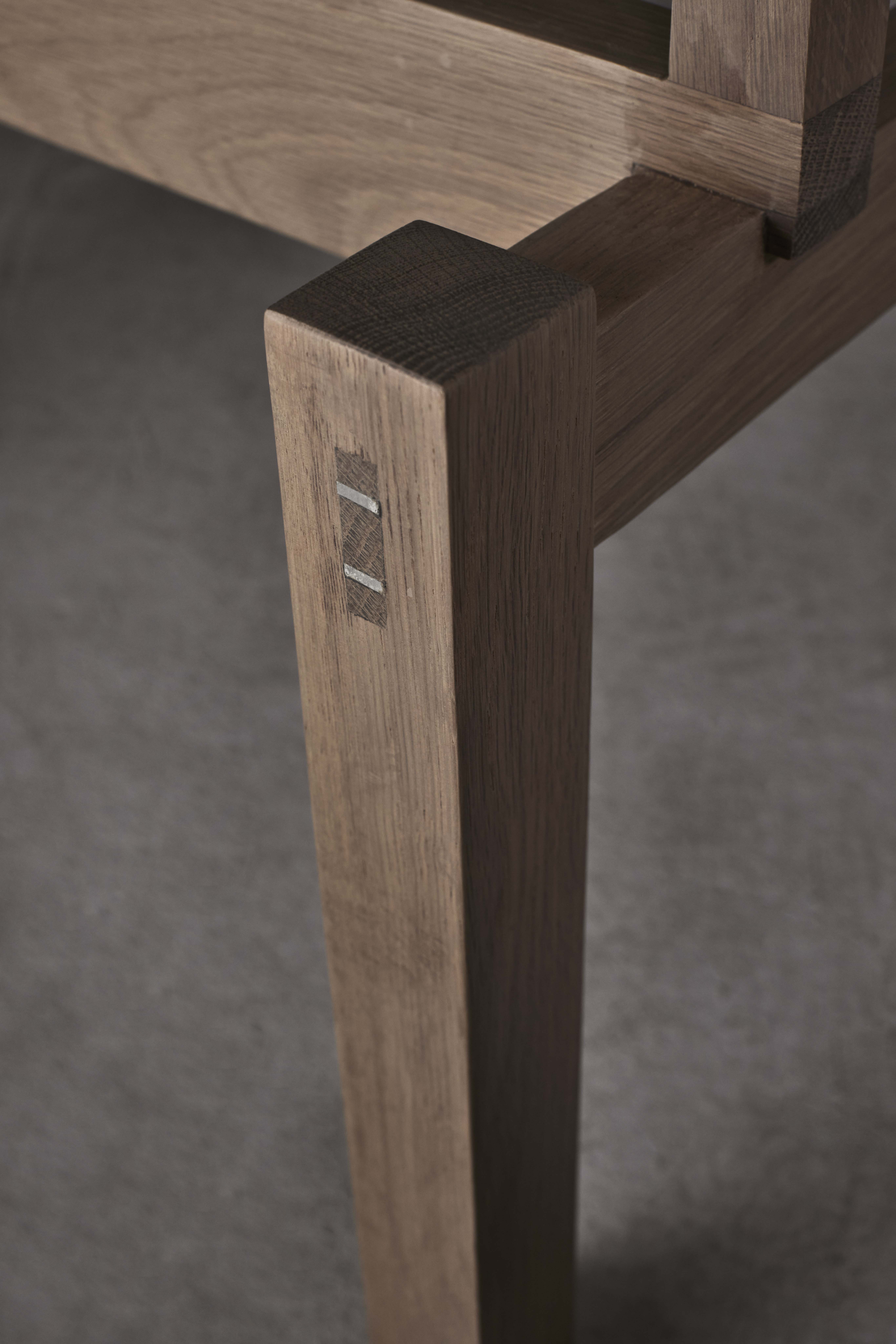

椅-壹的细节
椅-贰:
是在椅壹的基础上的简化版。同时,将椅子上下拆分为两个部分, 演化成一套由一把低矮的落地椅和矮脚茶几构成的低尺度桌椅组合。
Chair-Ⅱ
A simplified iteration of Chair -Ⅰ. The design vertically bisects the structure into two modules, evolving into a low-profile set comprising a floor-level chair and a short-legged side table.

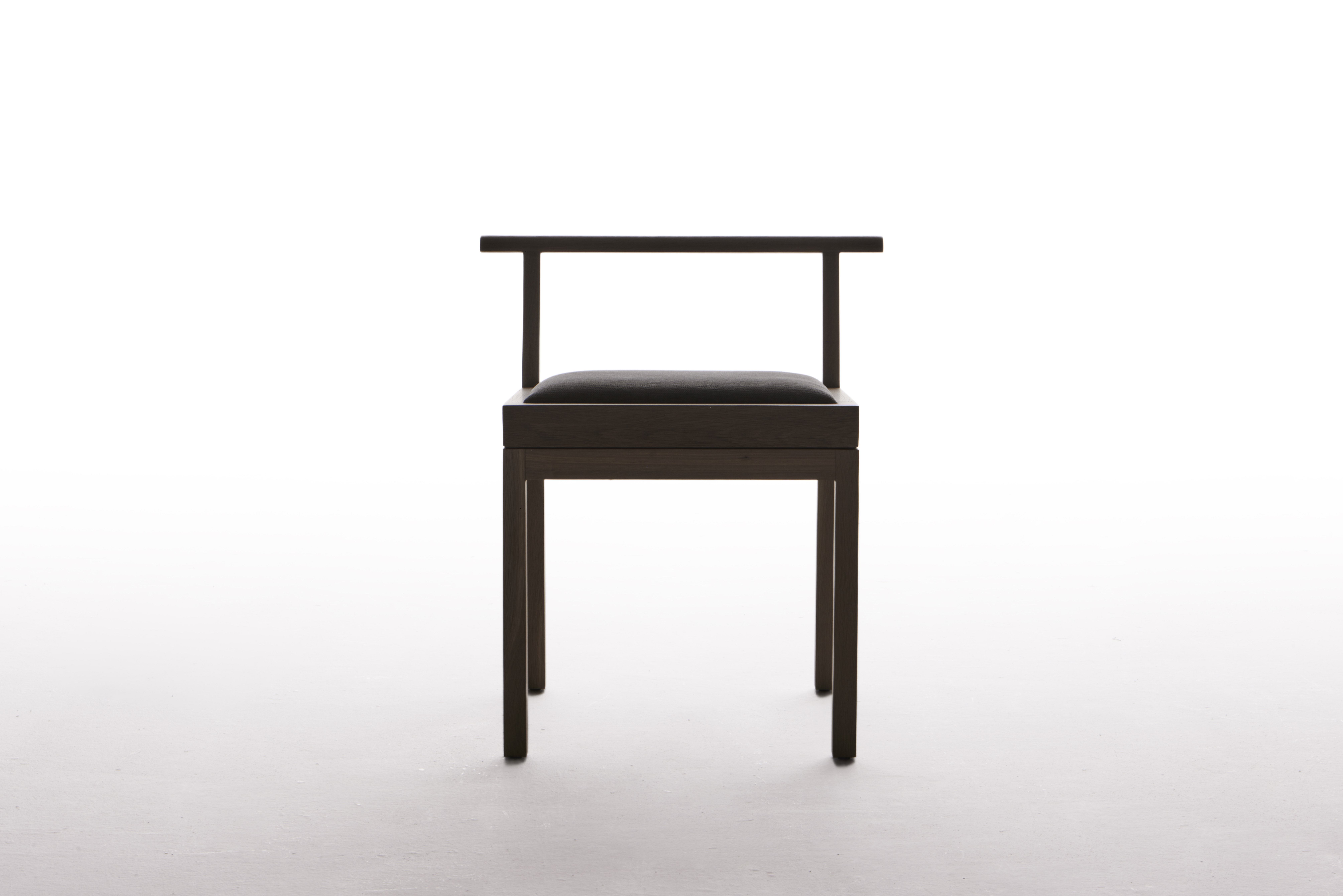
椅-贰 小禅椅

椅-贰 几

椅-贰 落地椅






椅-贰 细节
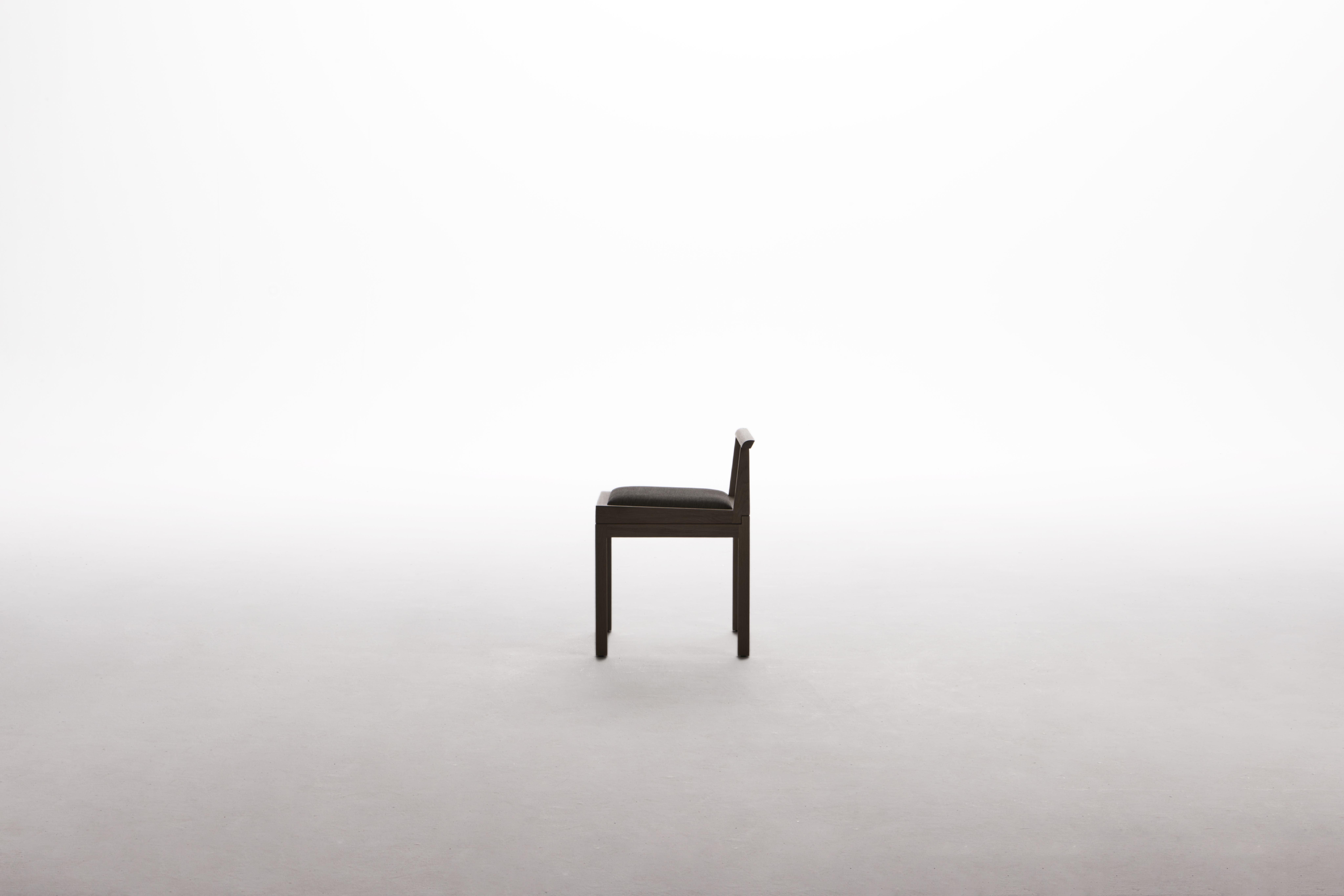


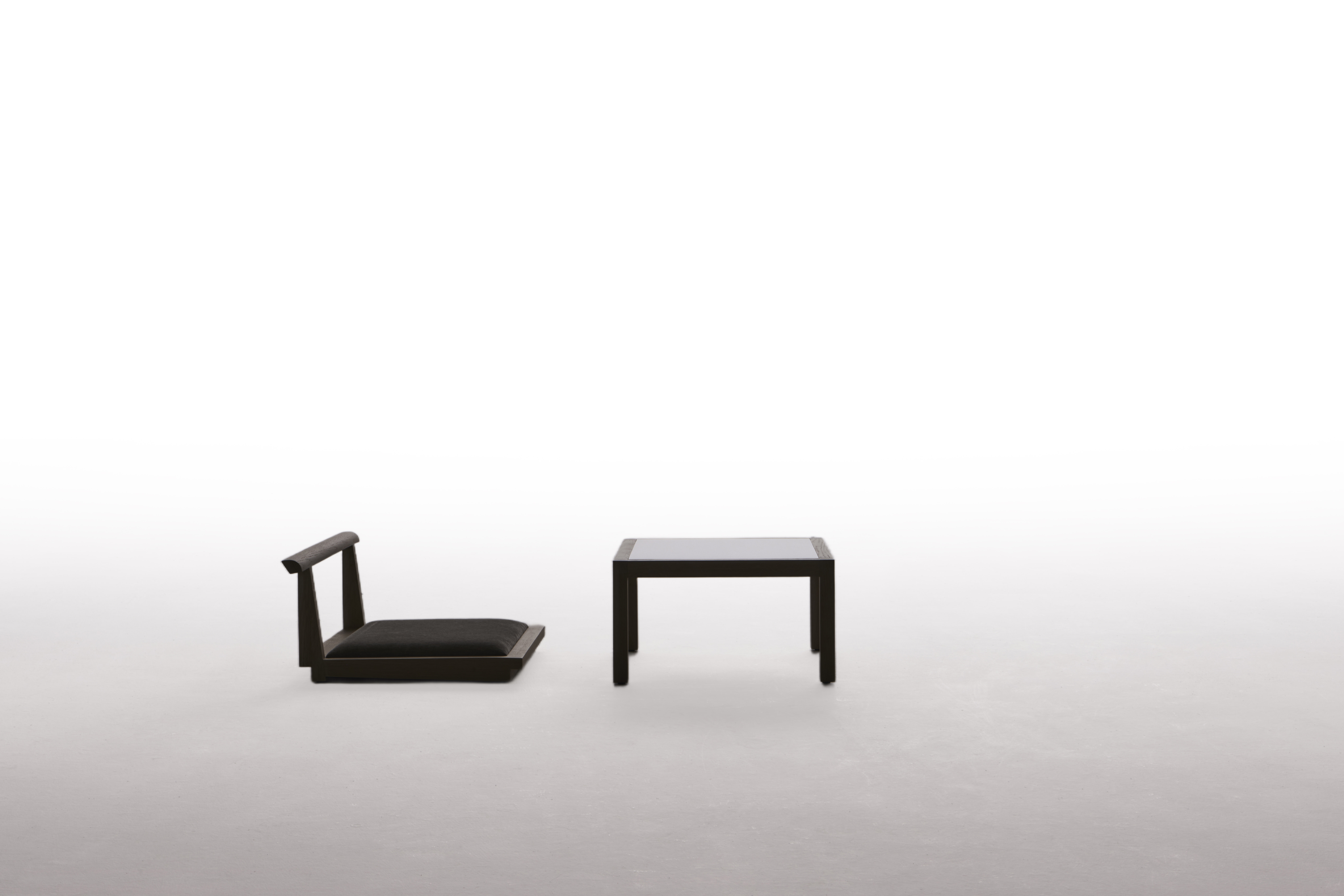
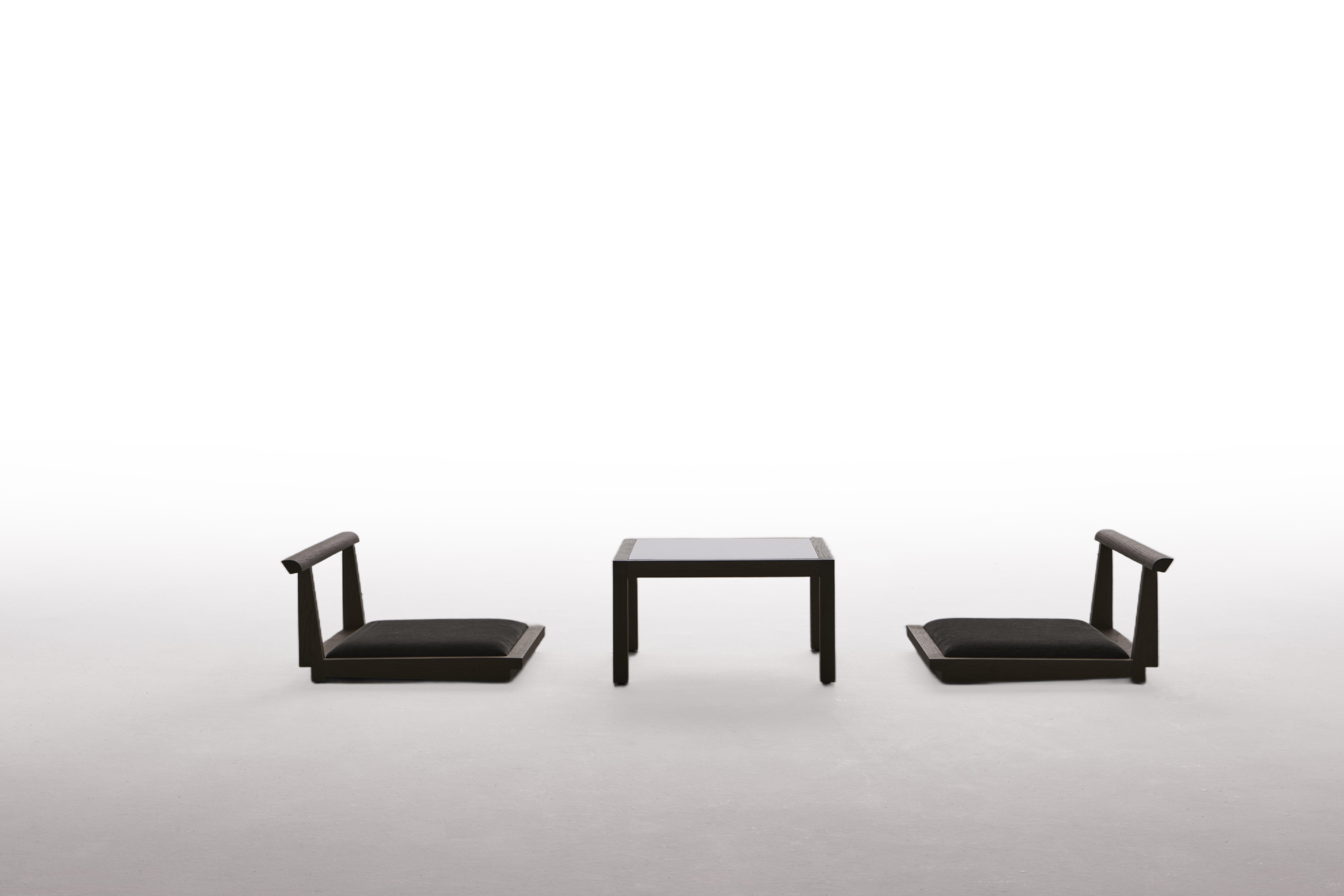
椅-贰 组合和变化
椅-叁:
是一把由框架和带有靠背的软垫面板组合而成的靠背椅。在此基础上,通过部件细节和高度的变化设计,形成新的椅子:增加扶手,变化出扶手椅;尺度变高,则成为一把吧椅。
Chair-Ⅲ
A backrest chair formed by combining a frame with a cushioned panel. Variations emerge through component adjustments: adding armrests creates an armchair, while elevating the height transforms it into a bar stool.


椅-叁 靠背椅

椅-叁 扶手椅

椅-叁 吧椅


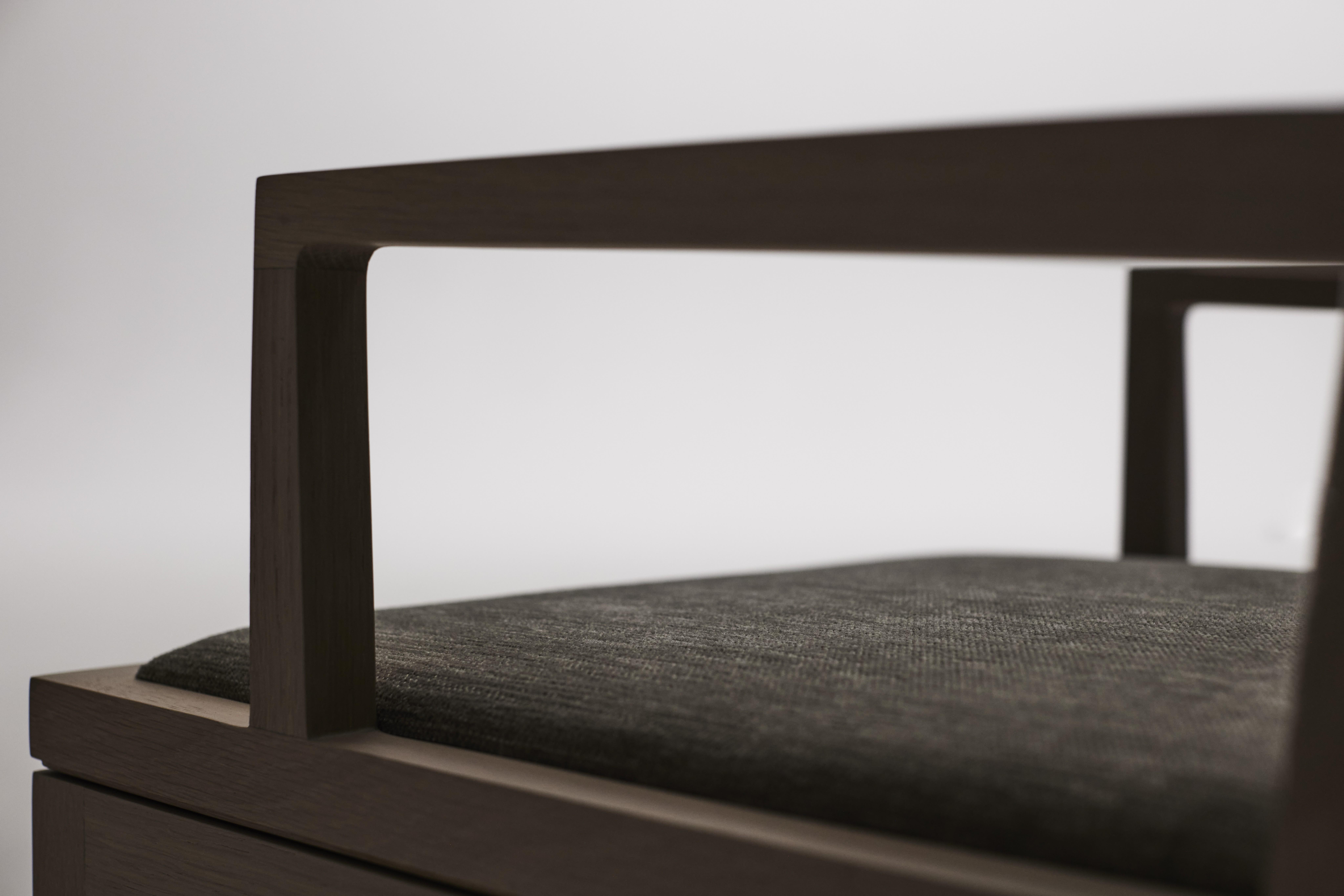
椅-叁 细节



不同高度和造型的椅
榻
Daybed
榻:将椅子的框架尺度拉长、变宽,便成为榻的框架。榻的坐卧面设置了三面围板,形成半围挡式的结构。
Daybed: Extending and widening the chair frame forms the daybed structure. Its seating surface incorporates three-sided panels to create a semi-enclosed configuration.




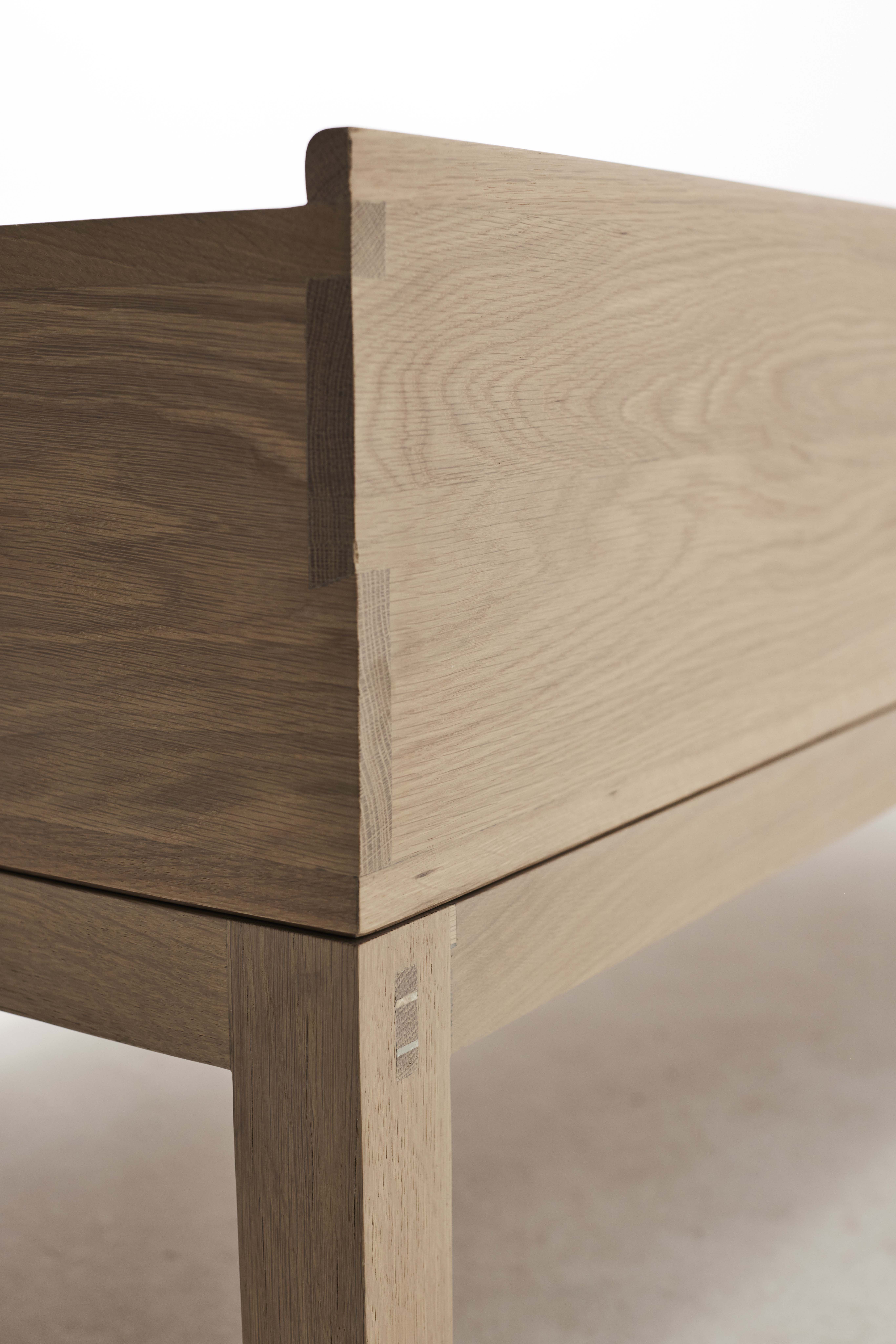
榻及其细节
条凳
Bench
在榻的基础上去掉扶手、靠背,再经过尺度变形,得到“凳”;将三个“凳”并置组合,形成“条凳”。
Derived from the daybed by removing armrests and backrests, then proportionally adapting the scale to create individual "stools". Three combined stools form an elongated bench.


桌
Table
在椅子的框架基础上,通过变形以及叠加木面板组合成桌子。
A table emerges through morphing chair frames and layering wooden panels.


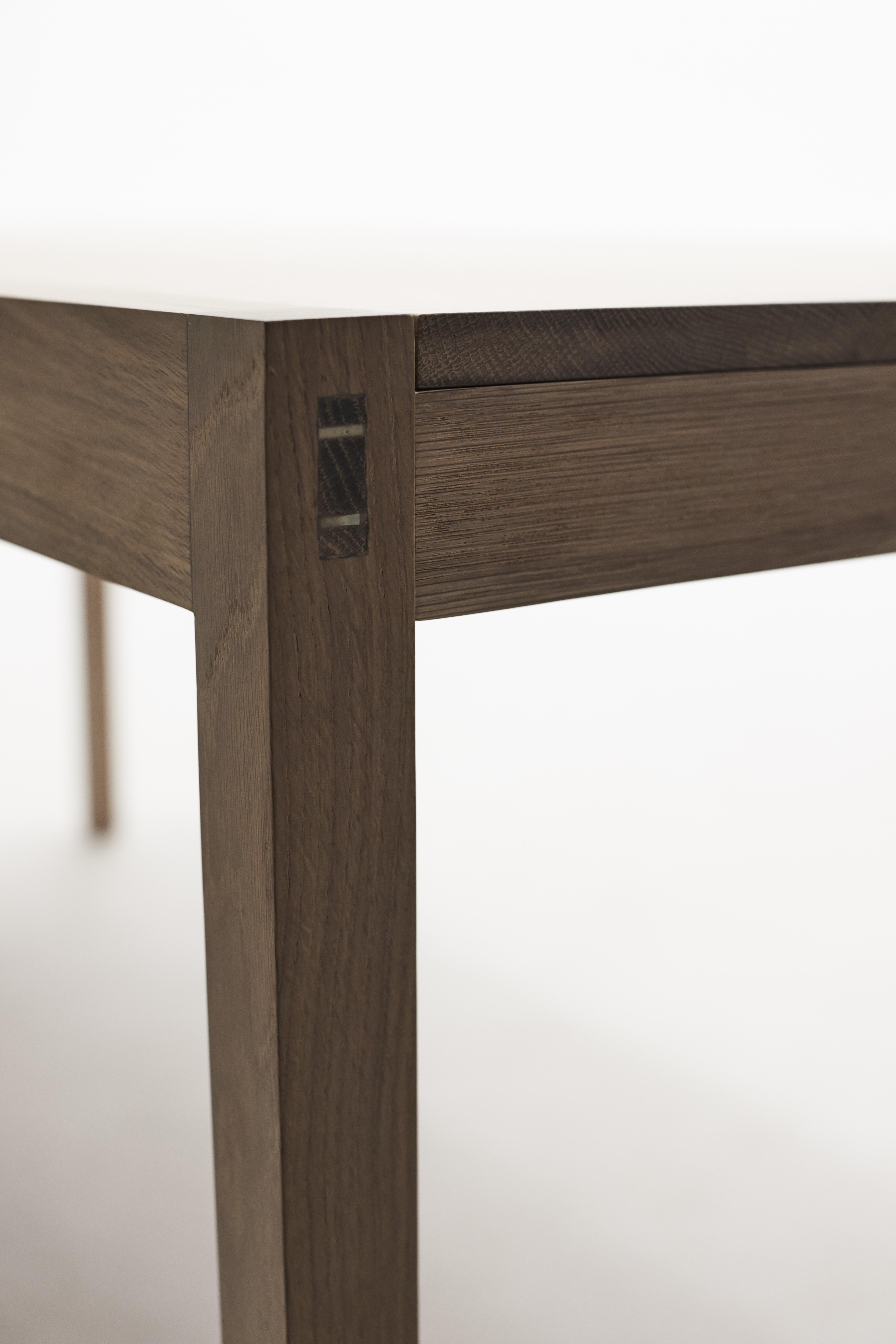

桌及其细节
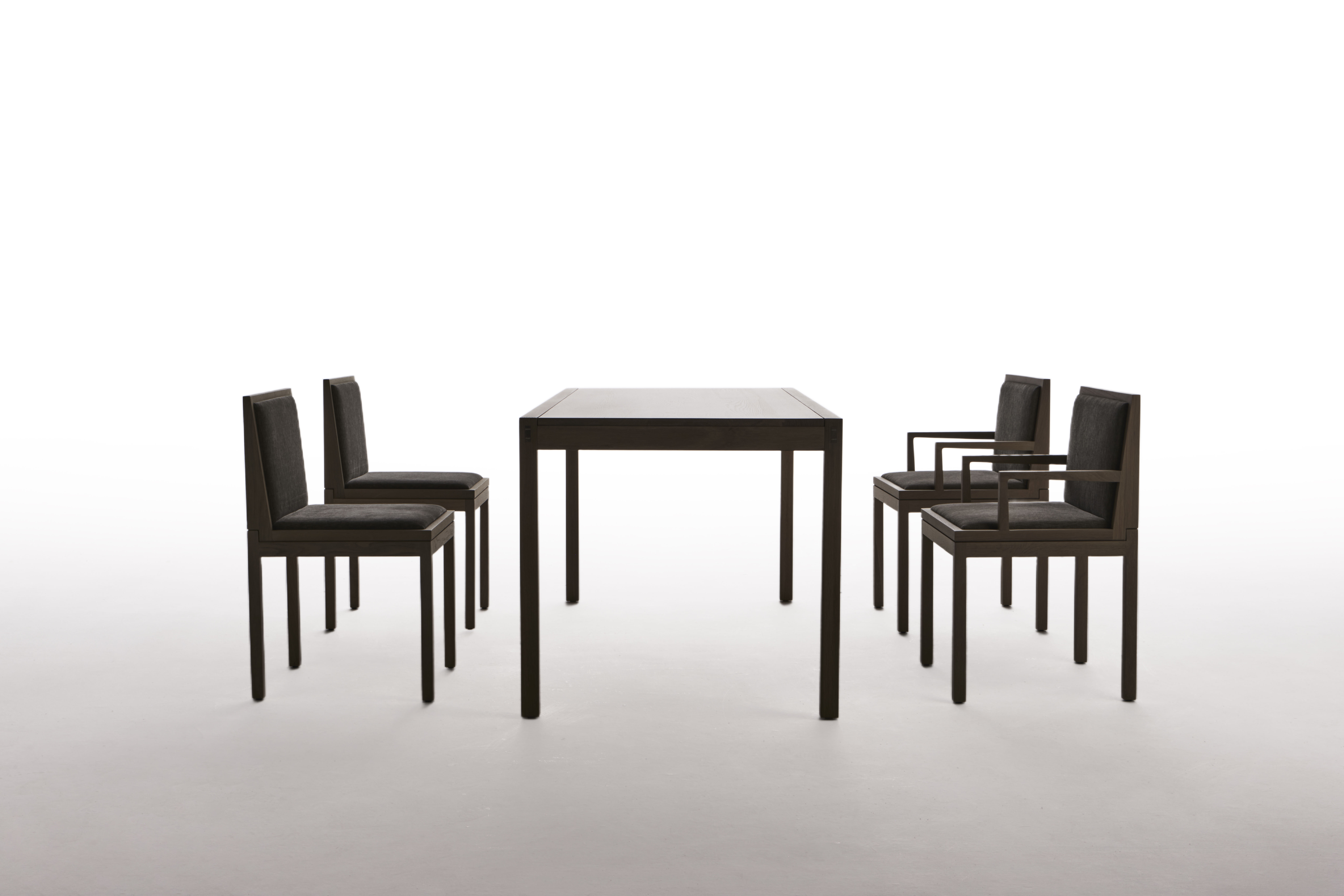
几柜
Storage Coffee Table
本身是一个内置抽屉的基本家具模件(“箱”),可以作为单独小茶几来使用。同时,也可以与其他模件或家具结合起来,比如表面嵌入作为置物面板的木或铝质托盘,或与榻、椅组合使用。除此之外,多个几柜也可以进行组合,变化出不同尺度的柜和茶几。
A foundational furniture unit with built-in drawers, functioning as a small coffee table. It interfaces flexibly with other modules: embedding wood/aluminum trays as surfaces, combining with daybeds or chairs, or stacking multiple units to create varied cabinets and coffee tables.


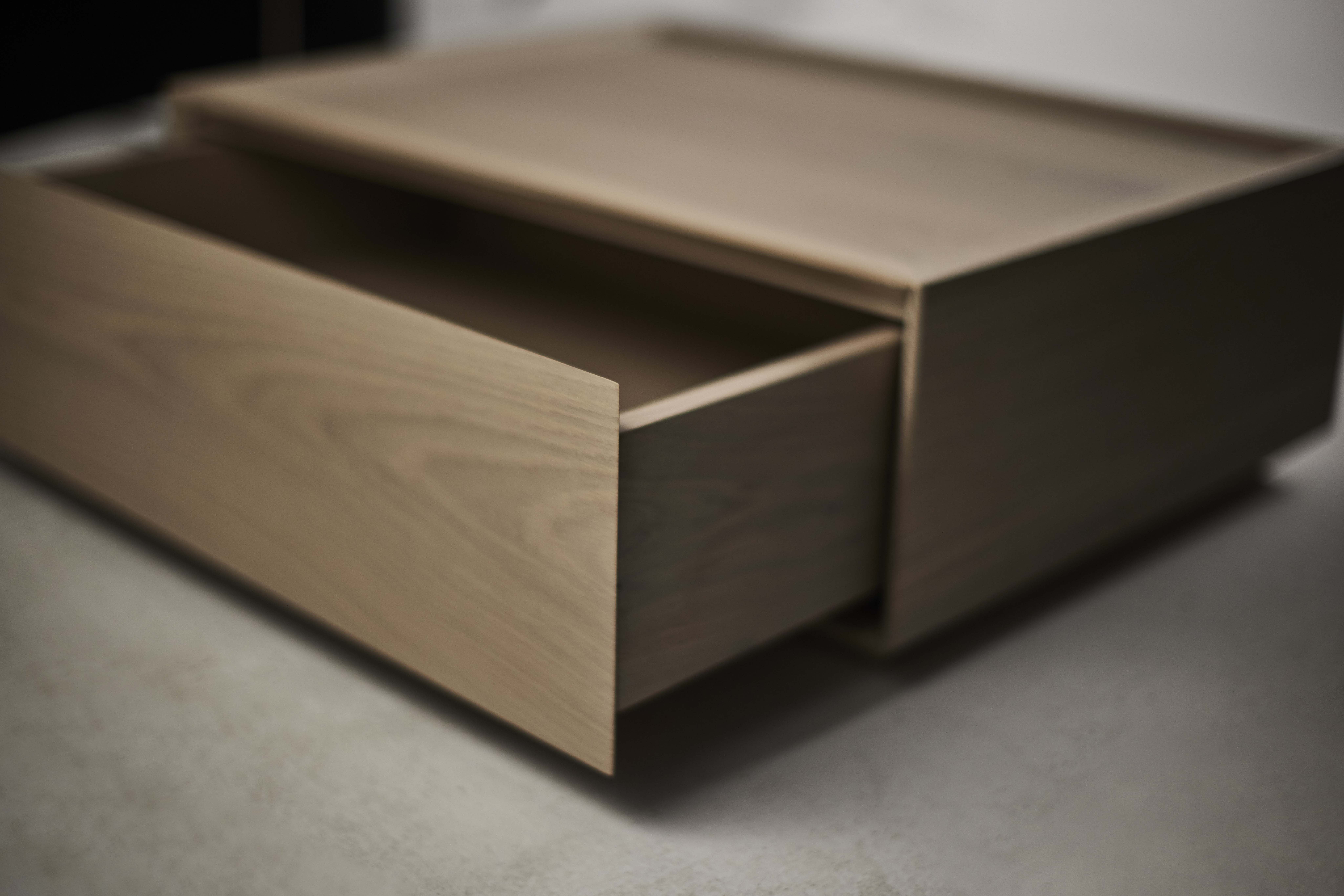
几柜及其细节

铝托盘

木托盘

底座支架




几柜、托盘和支架的相互组合






几柜的更多组合方式


几柜和桌椅、榻的组合

The Analogy Between Furniture and Architecture
家具和建筑是紧密相关的,它不仅是营造建筑空间的重要组成部分,其本身也是对建筑理念的延续,甚至可以说是一种小型的建筑。中国传统的木结构家具与木构建筑的同构,形成一种“建筑中的建筑”的关系。
因此,我们将传统木构建筑的结构形式通过类比、推演,融入“具”的设计与组构中。椅壹的框架结构形态便与传统建筑中的抬梁和密椽类似。
Furniture and architecture are closely related. Furniture is not only a vital part of shaping architectural space; it is also a continuation of architectural concepts, even a form of miniature architecture. The isomorphic relationship between traditional Chinese wooden furniture and timber-frame architecture creates a relationship of "architecture within architecture."
Therefore, we incorporated the structural forms of traditional timber architecture into furniture design and assembly through analogy and deduction. For instance, the frame structure of Chair -Ⅰ resembles the post-and-lintel (tai liang) and closely-spaced rafters (mi chuan) found in traditional buildings.

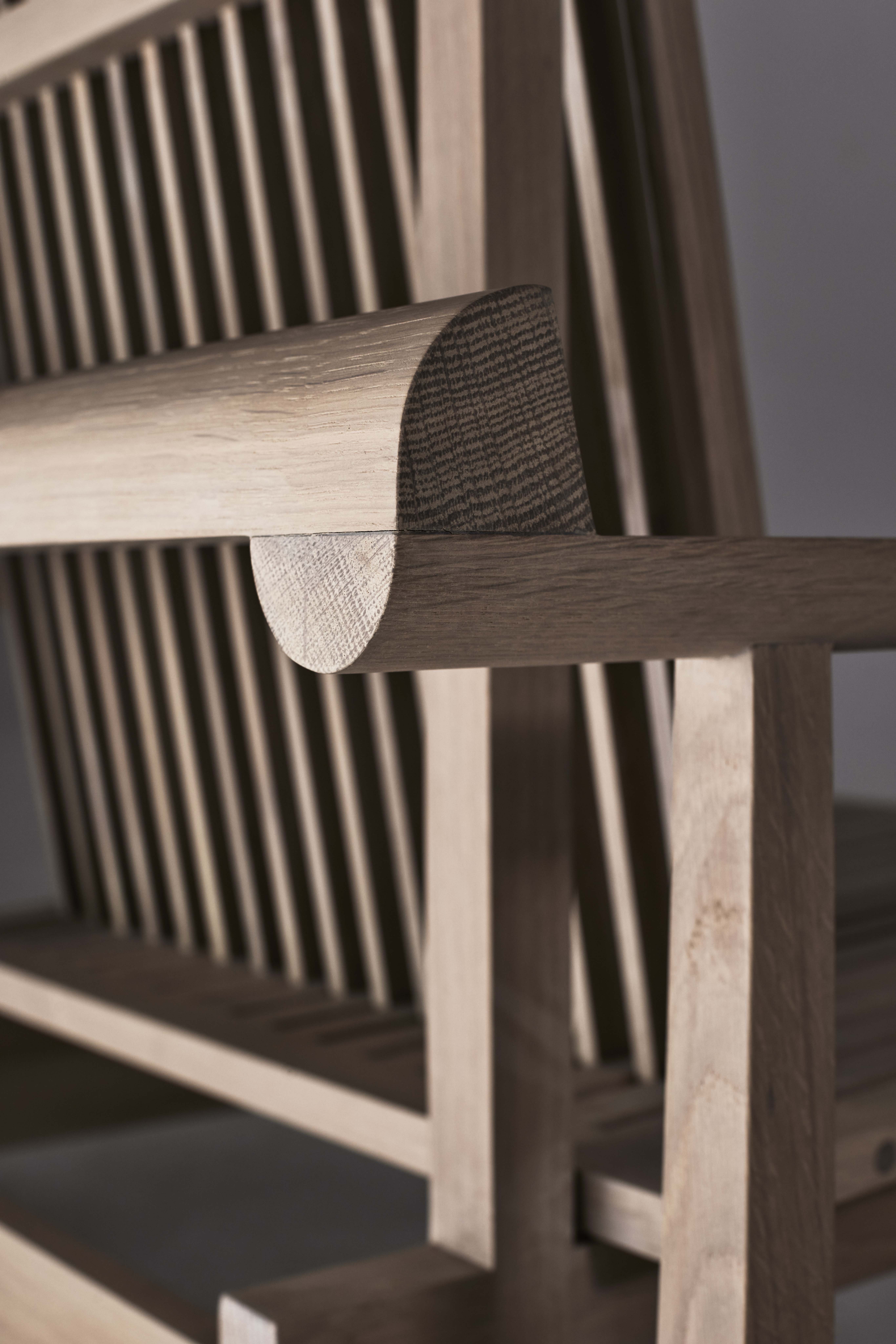


在几柜的组构中,多个几柜垂直叠加构成不同高度的柜子,形成了“塔”式建筑结构,抽屉的扣手便是塔的檐口。
In the assembly of cabinets and stands, vertically stacking multiple units creates cabinets of different heights, forming a pagoda-like architectural structure. The drawer pulls mimic the eavesof a pagoda.

感物“汉字结构”系列家具,用自己的方式重新定义了中国传统家具,使其更具生长性、延伸性和互动性,汉字结构的“模件化”也让高型家具重新有了亲近地板的方式。
Ugan concept's "Chinese Character Structure" furniture series redefines traditional Chinese furniture in its own way, making it more growable, extendable, and interactive. The "modularity" of the Chinese character structure also gives taller furniture a new way to reconnect with the floor.
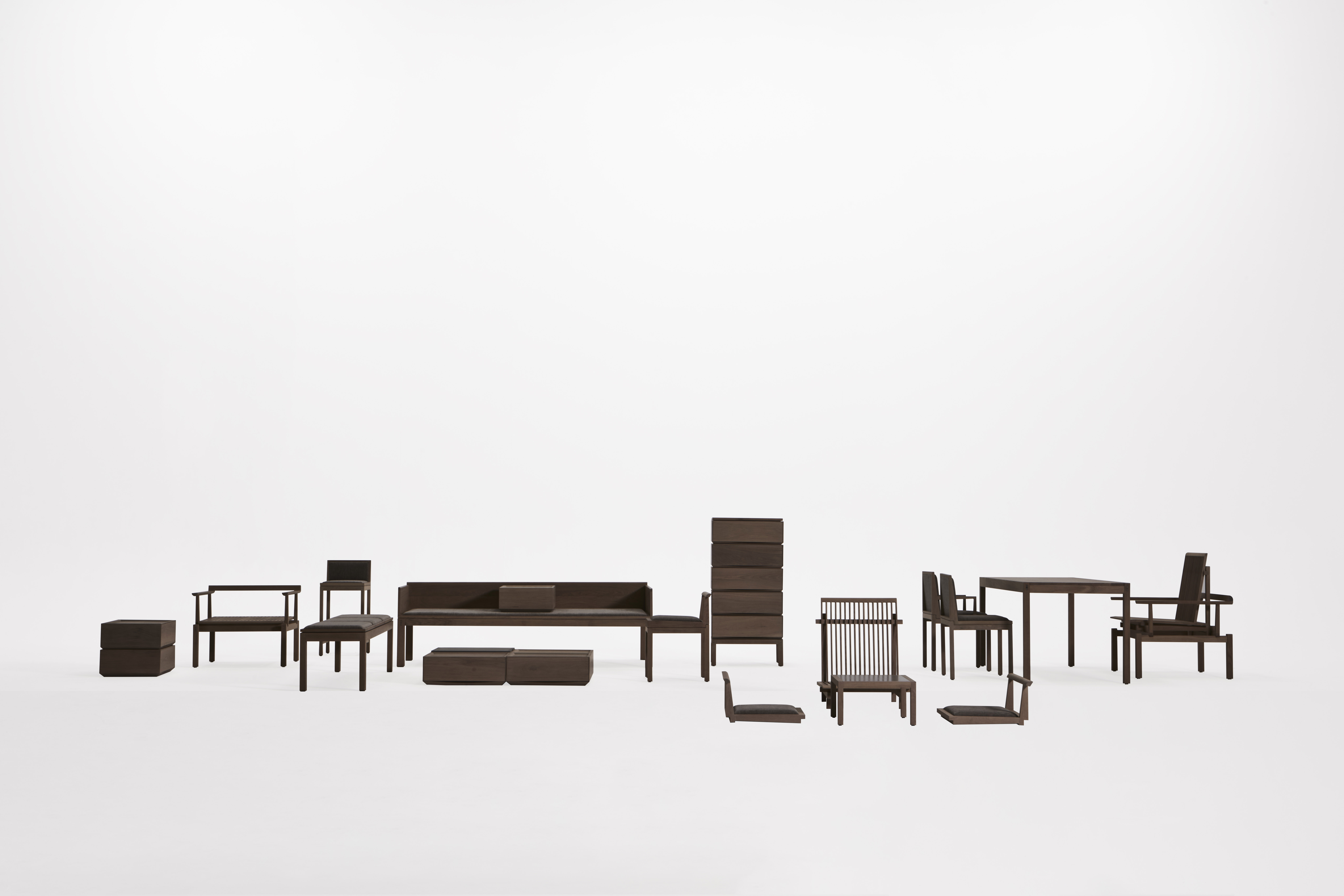
图片&视频|许熙正/小四
Photo & Video|Xu Xizheng / Xiao si

